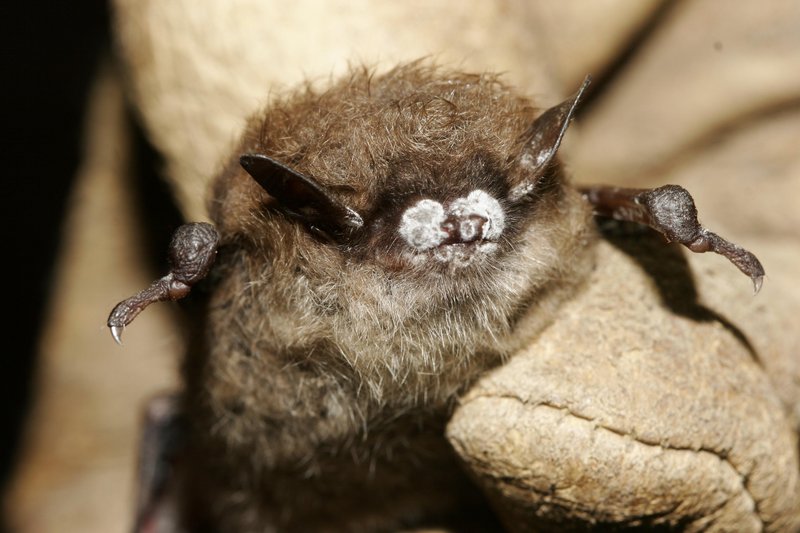MONTPELIER, Vt. — Scientists working to help bats survive a devastating disease moved some bats from Vermont and New York to Maine for the winter to see if more would survive if they hibernated in a cave free of the fungus that causes white nose syndrome.
While nine of the 30 bats that were moved survived, more than would have been expected in the wild, it’s unclear if the use of the abandoned bunker at the Aroostook National Wildlife Refuge offers a potential long-term solution to helping the bats species weather the outbreak.
The disease later identified as white nose syndrome was first detected in New York in 2006. Since then it has been spreading across the continent and threatening some species of bats with extinction in their original range.
Last fall biologists collected 30 hibernating bats, some of them clearly infected with white nose, from adjacent areas of Vermont and New York and took them to Maine.
Last week the nine surviving bats were brought back to Vermont and New York and released.
“We learned a lot from this experiment,” said Vermont Fish and Wildlife bat project leader Scott Darling. “These bats were visibly infected before being placed in the bunker, so we wouldn’t have expected many of them to survive in their natural cave environment.”
Jonathan Reichard, the U.S. Fish and Wildlife Service assistant national coordinator for white nose syndrome, said it was unlikely the experiment would be repeated in the same way it was this year.
“The first real objective was, can bats hibernate there?” Reichard said. He said that if it’s found bats do better in artificial hibernating areas, new techniques could be developed to help more bats survive.
Send questions/comments to the editors.



Success. Please wait for the page to reload. If the page does not reload within 5 seconds, please refresh the page.
Enter your email and password to access comments.
Hi, to comment on stories you must . This profile is in addition to your subscription and website login.
Already have a commenting profile? .
Invalid username/password.
Please check your email to confirm and complete your registration.
Only subscribers are eligible to post comments. Please subscribe or login first for digital access. Here’s why.
Use the form below to reset your password. When you've submitted your account email, we will send an email with a reset code.